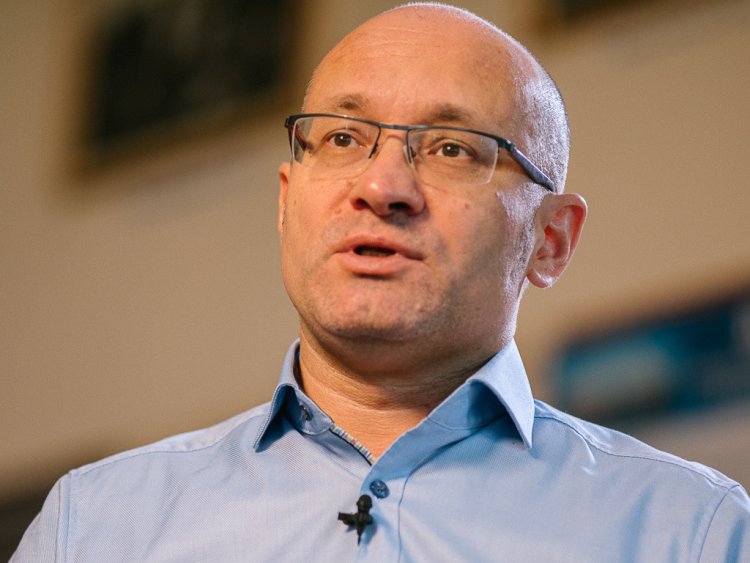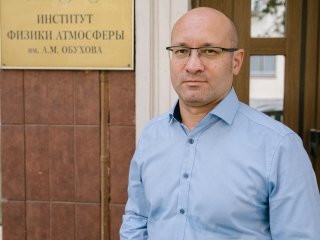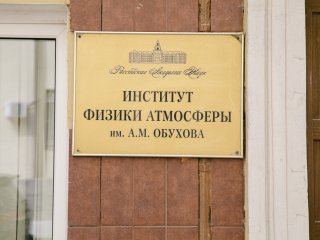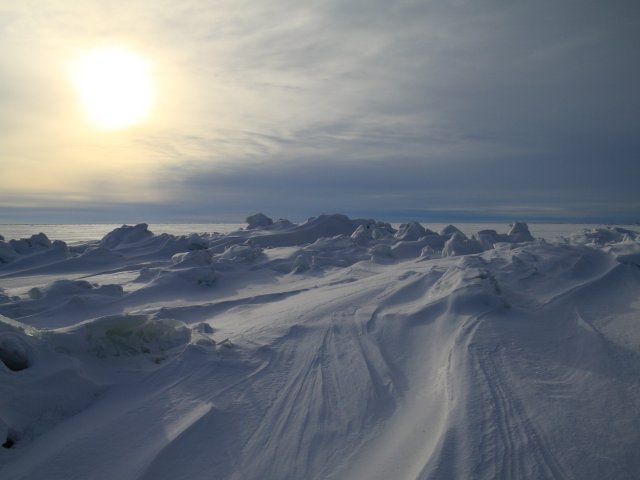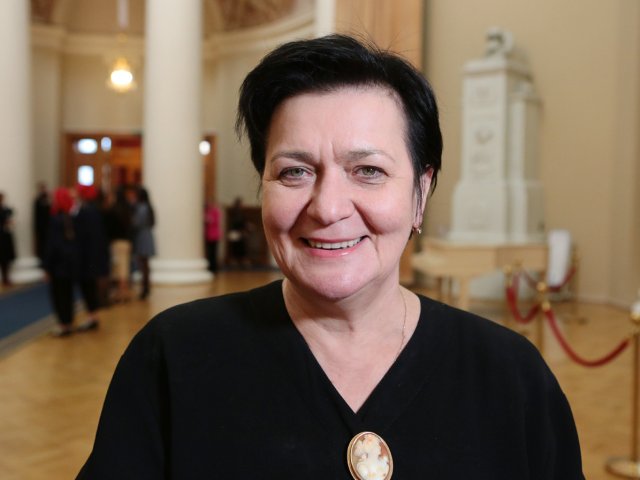We witnessed abnormal heat in European Russia this year. But what is going to happen to our climate in the future and what does it have to do with global warming? Periods of abnormally hot weather will become longer and more frequent according to Vladimir Anatolievich Semyonov, renowned climatologist, Corresponding Member of the Russian Academy of Sciences (RAS), Deputy Director of RAS A. M. Obukhov Institute of Atmospheric Physics, and Head of the Climatology Laboratory of the RAS Geography Institute. For more details, read our interview.
─ Now, during the COVID-19 pandemic, the world has split into two camps: some people are convinced that vaccination is necessary while others are categorically against it. Moreover, quite a few people deny the very existence of the disease. There is a similar situation with global warming: there are people who don’t believe that global warming is real and in full swing. What do you think of it?
─ You are right. I can also see a lot of similarities in the perceptions of COVID-19 and climate change. Both issues are highly politicized and very much relevant for society in terms of media coverage intensity; some measures that are being taken seem unjustified and/or ineffective to the public. Another similarity is that, in both cases, one should distinguish between cause and effect: some people may dislike the measures (such as the introduction of passes, etc.), which may indeed be unnecessary, but denying the cause, i.e., the fact that COVID-19 is most serious disease, is foolish.
The same applies to climate. Climate change is ongoing and has been primarily anthropogenic in recent decades. Measures taken to counter the process may also cause problems in the economies of many countries, but this doesn’t mean that there is no climate change or that humanity has no impact on the process. Yes, the transition to the new, “green energy” is a significant pressure on the economy, but to deny obvious scientific facts, global warming is extremely unwise.
We are talking about agenda differences. On the one hand, climate change physics says clearly that greenhouse effect caused changes that have been observed for a long time (50 to 100 years), i.e., temperature increase due to increased concentrations of greenhouse gases in the atmosphere – this is a fact of physics, confirmed by both theory and experiments. On the other hand, there is a question: how is this being used by politicians? And that is an entirely different agenda that shouldn’t be mixed up with the first one. People do not show themselves in the most favorable light when they deny global warming or the role of human activities in this process in order to justify their opposition to the imposed global climate policies.
Global warming is real, of course, and even the most vehement skeptics who could talk of its insignificance 20 years ago have changed their opinion. Science today has high quality measurements and we can see how the temperature has increased over the last 150 years, and how other characteristics of the climate system have changed. Sea ice is melting rapidly; the temperature of the Ocean is going up even in its deepest parts; the chemical composition of its surface layer is changing; there is ongoing sea water acidification due to the growing flow of carbon dioxide from the atmosphere into the ocean. We measure the increase in greenhouse gases (carbon dioxide, methane, nitrogen oxide) and thus see how the composition of the atmosphere is changing. In the last ten years, we have been able to measure the exact radiation balance from satellites.
─ Do all these measurements allow you to distinguish between anthropogenic impact and natural processes?
─ Radiation spectra have been measured quite accurately from satellites for over a decade. With the increasing concentration of greenhouse gases, we can see the carbon dioxide absorption window. We can also see how much radiation is absorbed, how much goes back to Earth, resulting in the greenhouse effect. Moreover, all of this is consistent with estimates made 30 to 40 years ago. And yes, we can say now that the faster increase in greenhouse gases is due to anthropogenic emissions, because the isotope composition of natural carbon differs from that of anthropogenic carbon (i.e., the carbon that was buried underground millions of years ago and is now being burned and released into the atmosphere). Today, we can clearly tell carbon produced by photosynthesis in plants from anthropogenic carbon.
Moreover, we know the changes timescale and the orders of magnitude of the flows of various carbon-cycle components. We know how much oil, coal, and gas are being burned, how much methane is being released, etc. Now, the anthropogenic flow is already comparable with the flows on the atmosphere-ocean and atmosphere-land boundaries. The number is so high that the ocean and land ecosystems no longer can digest the extra flow of carbon dioxide, and it’s starting to accumulate in the atmosphere. It all depends on the timescale: if the same amount of carbon dioxide were to be released into the atmosphere over, let’s say, a million years, the excess greenhouse gases would be absorbed by the oceans little by little, sinking to the bottom along with dead organisms to be buried there. On dry land, carbon would be disposed of in a similar way. But now, the carbon cycle imbalance is increasing too fast – it only takes decades, literally…
─ And that is why our ocean can’t handle this any longer?
─ Yes, neither the ocean nor the dry land can digest 10 Gt of carbon – it’s too much. That is why this carbon, carbon dioxide, is accumulating in the atmosphere.
─ But the atmosphere can purify itself, can't it?
─ That’s the point: the atmosphere gets rid of carbon dioxide by dumping it onto the land or into the ocean, but the amount of such “dumping” is limited: it cannot increase rapidly, not at this rate.
It's the first time in the history of Earth, that the human impact has gone beyond the natural limits within which the system is able to dampen (note: weaken, calm) adverse impact and kind of digest it. Actually, it’s an interesting philosophical fact: at the start of the century, when people first demonstrated that they could control regional atmospheric processes, e.g., make it rain artificially, that caused a storm of debate (philosophical, religious, etc.). That was momentous in the development of philosophical thought. Now, we are seeing the same thing: humans are able to influence the entire planet’s climate for the first time. This is an amazing fact, a milestone in the development of the co-existence of people and nature (the noosphere).
─ Earth has already seen some periods of significant warming and cooling. What is the main difference now?
─ Yes, there were periods when the temperature went up 10 or 20 degrees. There were periods with temperatures over 400C in the equatorial Pacific. There was also a total ice age, when the land was completely covered in ice and snow. The temperature change range of Earth over 4.5 billion years of its history has been huge, but all of those changes occurred millions, hundreds of millions or even billions of years ago, when the atmosphere composition was totally different.
In the Quaternary Period, as interglacial periods were replacing ice periods, the temperature changes were around 6 to 10 degrees. But again, all that was happening over 100,000 or 40,000 years, as was the case with the last interglacial period, which started 12,000 years ago – the temperatures went up, reaching the maximum around 6,000 years ago. The temperature has been going down slowly ever since. The temperature in the Northern Hemisphere went down by about one degree in 2,000 years. And now it has gone up by one degree in 100 years! That is, we are seeing a warming that is 20 times faster than anything observed over the last 2,000 years. That’s the problem.
We know that people can live more or less comfortably in the area from the latitude of 60 degrees south: it corresponds to Saint Petersburg in Russia, Bergen in Norway, etc. There are quite a lot of northern cities where people live ok. People have also adapted to heat: remember Dubai where the average temperature is 40 to 50 degrees Celsius. Of course, with modern technology, people can adapt almost to any climate. The primary problems with the climate change are its rate, density, and the fragility of the modern infrastructure they created.
─ It’s a paradox that countries contributing to global warming the least, such as African countries, may suffer from it the most.
─ Yes. It is known that the largest contributors to global warming are countries such as the US, China, India, and Russia; the latter, by the way, is not number one in that respect. The total emissions from the EU countries place the European Union in the third place, surpassing India. The problem is that the changes are too rapid while developing countries cannot adapt to them fast and will therefore suffer, and not from some direct impact such as higher temperature (I think people in Africa can survive that all right), but rather from, let’s say, changes in the hydrological cycle: water shortages may become a real problem. Drought, rising water levels, extreme weather phenomena – developing countries will find it very hard to cope with all this as they lack the resources available to the technologically developed regions.
─ We've been having an abnormally hot summer in European Russia this year; there was a flood in Crimea. Are these events connected to the global warming?
─ We believe that they are, in general. But, of course, we can’t say that a particular event is directly connected to the global warming. In order to establish such relationship by using only statistical methods, we would need at least 20 or 30 and preferably 40 or 50 years of such abnormally hot climate. That would give us statistics to review, make reliable estimates and comparisons with a colder climate. We've been having this abnormally hot climate for 10 years at most, and extreme events are rare by definition. Therefore, we’re doing it in a different manner: by studying the physics of the processes and looking into the causes of such abnormal heat, into atmosphere circulation parameters and atmosphere thermodynamics. We're looking at how those parameters change with the climate. So far, the developments are consistent with our understanding of the changes in the atmosphere dynamics that we expect to happen due to global warming.
The main cause of the abnormal heat this year was a prolonged anticyclone that was hovering over European Russia. Such anticyclones are called blocking anticyclones since they block the zonal transport, i.e., the zonal west-east flow from the Northern Atlantic. Humid and cool Atlantic air is “pressing” against this anticyclone and starts “wrapping” it from the north and from the south, the zonal flow splits. This is why the Atlantic cool did not reach us.
Such anticyclones develop constantly; this phenomenon has been known since scientists started studying atmosphere dynamics. We understand what happens in such anticyclones but it’s hard to forecast when one of those is going to form and, especially, when it will disintegrate, because such processes have non-linear dynamics, with bifurcation in a dynamic system, so it’s very hard to predict when the system is going to reach the point.
While it was abnormally hot and dry in European Russia, the Black Sea region, Crimea, had heavy rains that caused flooding and had a serious adverse impact on the population and infrastructure. These events are also connected to both the anticyclone over Moscow and the regional climate change. The zonal flow from the west that brings cyclones to Central Russia has to wrap the blocking anticyclone from the south and from the north, thus increasing the probability of cyclones in Russia’s south and north. The heavy rains were caused by a cyclone that passed south of the Russian Black Sea coast. Another important thing is the fact that the summer surface temperature of the Black Sea has risen by about 2 degrees over the last 40 years. This means that the air over the sea became warmer and more humid and therefore more unstable. It is the cyclone moving along the coast that brings this air to the dry land, where the air has to rise, flowing around the foothills. The process of deep convection may develop as the air rises, with powerful upward air flows that absorb humid surface air and release moisture condensing as the air rises in the form of heavy rains. It was this process that caused the heavy rains and the flood in Krymsk in 2012. We have shown in our research that if the surface temperature of the Black Sea were 2 degrees lower than it is now (approximately as it was back in the 1980s), there wouldn’t have been heavy rains. I daresay that the increased sea temperature also affected the intensity of the rains in Crimea this summer.
─ What shall we expect in the future? It is going to get even hotter in European Russia?
─ By the end of the 21st century, the temperature is expected to go up by several degrees at least. Moreover, Russia is getting warmer much faster than the rest of the planet – the so called Arctic reinforcement. In tropical areas, the increase in the annual temperatures may be 2 to 3 degrees, while in Russia it’s likely to be 5 to 6 degrees. Our winters may become 8 degrees warmer, with summer temperatures rising by 4 degrees. The summer temperature in Moscow Region has gone up by about 1.5 degrees over the last 30 years, even by 2 degrees in some areas.
─ Not a small thing either.
─ No, and we’ve already noticed the weather changes.
2 degrees are actually the difference between the average temperatures in June and July, i.e., June in Moscow is becoming like July 30 or 40 years ago. We can see temperature surges get bigger every year. The causes of such dramatic anomalies are in the dynamic of the atmosphere as well as in the general increase in temperature.
This warming is making the weather in Moscow more similar to what is normal for southern regions: Voronezh, Rostov-on-Don, etc. There are heat-shower cycles or abnormally hot weather similar to that in Southern Russia. It’s just that southerners are used to it while we are yet to adapt.
─ So Moscow will turn into Rostov-on-Don in 50 years, possibly even sooner?
─ So far, things look like we’re moving in that direction. Is this a good or a bad thing? Given that a vast majority of our population lives under cold stress (the average winter temperature is -15 degrees – not very pleasant, to say nothing of lower temperatures), many people might like warmer winters. Therefore, if winter temperatures were to increase by 6 to 8 degrees, most people would welcome that, I think. For Moscow Region, this means that our winters in the 2060s or 2070s would be like a winter in, let’s say, Hamburg, now: a mild frost of -3 to -5 degrees at night, and + 2 to +3 degrees during daytime.
─ With abnormally hot summers?
─ Summer temperatures are going to rise by about 3 to 4 degrees, as I said before. Perhaps, we’ll become like Rostov-on-Don is today. Or not quite. For comparison: it's even hotter in New York but nobody is complaining and many people dream of moving there. Adaptation and readiness to face change are what is important. First and foremost, I’m talking about the readiness of infrastructure in our cities, especially the stormwater drainage systems.
─ I would also like to talk to you of the Arctic, another interesting topic you are working on. Is it true that ice in the Arctic is melting faster than all the worst case scenarios predicted?
─ Indeed, the Arctic ice area is shrinking rapidly. It has reduced by 13% over the last decade. That’s quite a lot. The area of the Arctic summer sea ice has reduced by half compared to the 1970s. Moreover, in 2005-2010, the melting accelerated ever further and went down, as the charts show. Why? The jury is still out. Perhaps, some instability point has been reached in the Arctic system, triggering some positive feedback, which further accelerates the changes. But it may be some natural fluctuation that overlapped with the trend associated with the anthropogenic impact, with the general warming. It is not clear so far, to tell you the truth. But the fact remains: the changes have accelerated. This might not be due to a single cause, but analysis shows so far that there must have been a strong internal climate fluctuation. All this might have happened within a natural cycle that is supposed to dwindle. But will it? Given the increasing anthropogenic impact, we can’t say for sure. There is a risk that in the future, ice in the Arctic will become a seasonal phenomenon.
─ Vladimir Anatolievich, as a climatologist, which scenario do you think is more likely: the positive or the negative one?
─ There is no bad weather in nature, as the saying goes. I would apply this expression to climate as well. Yes, the range of the changes that we may face (a 6 to 8 degree increase in temperature in Russia) is huge, but it’s within the temperature ranges we experience when traveling from the south to the north or from the west to the east of Russia. This means that we can adapt to such climate changes. However, wise, science-based and well-planned measures would have to be taken in all sectors: construction, manufacturing, medicine, etc. Such measures would prevent serious adverse impact and enable us to adapt to the new climate. But we have to start working on this now or we’ll suffer losses in the future. On the whole, I wouldn't be too scared of the changes to come, but I would point out that there is a serious danger of the climate factor being underestimated in long-term planning and development of our country.
